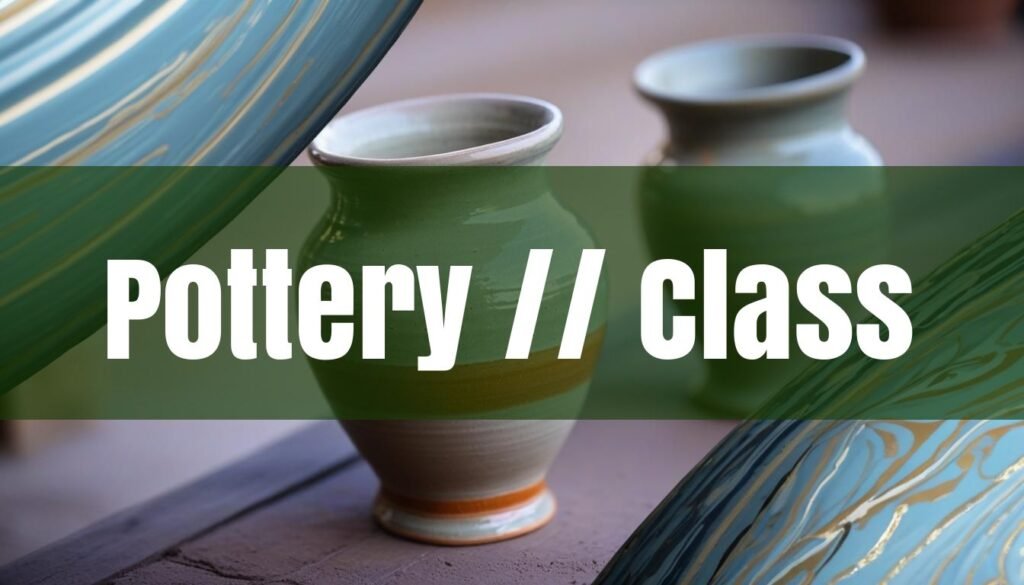Are you drawn to the tactile world of clay, envisioning yourself crafting unique bowls, mugs, or sculptures? Pottery is more than just a hobby; it’s a journey of creative exploration, stress relief, and community engagement. The first step in this journey is finding the right place to learn and practice your skills. If you’re wondering “where to make pottery near me,” this guide will help you navigate the options and discover the perfect pottery class or studio in your local area.
Let’s start by exploring the different avenues for locating pottery classes. Online directories are a great starting point, providing listings of art centers, studios, and individual instructors in your vicinity. Community centers often offer affordable pottery classes for beginners, providing a welcoming environment to learn basic techniques. Local art organizations are another valuable resource, frequently hosting workshops and classes led by experienced ceramic artists. Don’t forget to check with university extension programs, which may offer pottery courses as part of their continuing education programs.
Pottery workshops offer unique ways to learn.
Once you’ve identified potential locations, it’s time to consider the types of classes available. Beginner workshops are ideal for those with no prior experience, introducing you to fundamental techniques like wedging, centering, and basic shaping. Open studio time provides access to studio equipment and a supportive environment for independent practice. For those looking to specialize, there are courses focusing on specific techniques like wheel throwing, hand-building, or glazing.
Hand-building techniques are beginner-friendly methods where you shape the clay with your hands and simple tools, it encompasses three main techniques and forming methods: pinching, coiling, and slab building.
Learn more about hand building here. Pinch pots are a great first handbuilding technique to learn when you first begin to work with clay.
Read about pinch pots here. Coiled pots are created by rolling out long individual coils of clay and joining them together to create a larger piece.
Find out about coiled pots here. A slab pot is formed by joining flat slabs of clay together after they have been processed through a slab roller.
More info on slab rolling can be found here.
Evaluating Your Options: What to Look For in a Pottery Class
Choosing the right pottery class involves considering several key factors.
Cost is an important consideration, so compare prices and inquire about any additional fees for materials or firing. Class size can impact the level of individual attention you receive, so smaller classes are often preferable for beginners. The instructor’s experience is crucial, so research their background and teaching style to ensure they align with your learning preferences. Studio equipment is another important factor, as access to wheels, kilns, and other tools is essential for practicing your skills. Finally, inquire about firing services, as this is a necessary step in transforming your creations into durable ceramic pieces.
Make sure the studio has the right tools.
When starting out, there are a few essential tools that can help you get the most out of your pottery experience. A basic needle tool, ribs, wire tools, sponges, bats, knives, an apron, trimming tools, and glazing brushes are all invaluable for shaping, smoothing, and finishing your pieces.
Consider a beginner’s toolbox. Remember that mistakes are a natural part of the learning process. Improper wedging can lead to air pockets in your clay, making it difficult to work with.
Here’s a guide on avoiding pottery wheel mistakes. Using clay that is too dry or too wet can also cause problems, so finding the right moisture balance is key.
More information on clay and moisture levels can be found here.
Embracing the Clay: Benefits and Beginner Projects
Taking pottery classes offers a multitude of benefits beyond acquiring a new skill. The act of working with clay can be incredibly therapeutic, providing stress relief and a creative outlet. Pottery also fosters community engagement, connecting you with like-minded individuals who share your passion for the ceramic arts.
It’s a chance to unplug from the digital world, get your hands dirty, and create something tangible and beautiful.
For beginners eager to dive in, there are several easy pottery projects that can help build your skills and confidence. Pinch pots are a simple and satisfying way to create small bowls or vessels.
Pinterest has some pinch pot ideas for beginners. Coil pottery involves rolling out coils of clay and layering them to create larger forms, offering a great introduction to hand-building techniques.
Gathered.how has more on beginner coil techniques. Slab pottery uses flat sheets of clay to construct geometric shapes, providing a foundation for more complex projects.
Soul Ceramics offers some starter tips. Even simple projects like mugs, planters, or soap dishes can be a fun and rewarding way to practice fundamental techniques.
Consider some other ideas from Gathered.how.
The journey into pottery is one of continuous learning and discovery. By finding the right classes, embracing the process, and celebrating both the triumphs and the wobbles, you’ll unlock a world of creative possibilities and find your own unique voice in clay.





